Alberta
Danielle Smith: Is there Going to Be a Central Bank Digital Currency? Almost Certainly
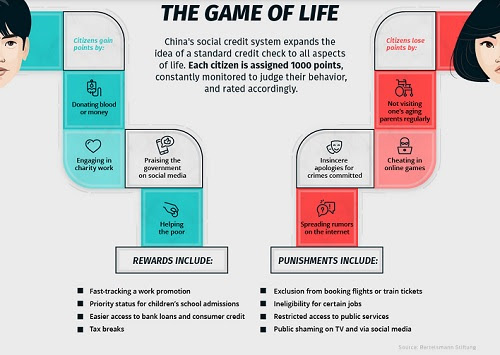
This newsletter was distributed by Danielle Smith.
I started my Western Standard show last week in the same week I was moderating a two-day conference for the Canadian Blockchain Consortium. So my shows last week were centred around trying to educate people as to what is cryptocurrency and Bitcoin, in particular, and how it is being used by regular people: such as when governments hyperinflate their currencies – like this story in Venezuela where people use it to buy food – or when countries fall apart like in Ukraine – where this man used the Bitcoin in the wallet on his phone to escape from the country before conscription came in.
As a side note, I can tell you I haven’t missed the cesspit of social media commentary. Part of the agreement with Western Standard is they broadcast on the social media channels so I get social media trolls shit posting me through the entire show. Delightful.
But I do take seriously those in our community who write me emails and approach me at events to express concerns.
Amanda is an example. She thanked me for the primers and said, “I was just chatting with a friend who said Poilievre needs to tone it down on that (cryptocurrency) because he is losing people like her because it is not well understood.” Others told me they wanted me to stop talking about Bitcoin also because they don’t understand it and they said I should just talk about freedom instead.
My dears…
I wish I could stop the world so we could all get off.
I’d probably get off in the year 2005 – just when we had all the advantages of technology but none of creepiness. I could easily live in a world before iPhone. I loved my blackberry. My husband would probably choose the 1950s when we still had passenger rail service and men wore hats. He can do without technology completely.

But we are in the world of the Technocreepy (to borrow the phrase coined by professor Thomas Keenan) and, ironically, it is one where you will soon be able to fully immerse yourself in whatever world you choose. I’m just learning about the Metaverse, but the concept of it is to use virtual reality goggles to enter into a world of digital avatars and artificial intelligence to meet up with others in a constructed environment. “Meet you for a wine on the train from Calgary to Toronto in 1950” may one day be a weekend date for my husband and me.
Central Bank Digital Currency vs Cryptocurrency…
But the biggest uneasiness I’m hearing is around the concept of a central bank digital currency. Pierre Poilievre has said he is absolutely opposed to a central bank digital currency at the same time as he says he wants to make Canada the blockchain capital of the world and make it easier to receive payments in cryptocurrency. That should tell you right there that a digital currency (issued by a central bank) and a cryptocurrency (not issued by a central bank) aren’t the same thing. More on that in a minute.
I’m hearing from many of you who are feeling unease that you don’t want either one. You say you want to move to bartering or stay in cash.
Two things…
You will always be free to barter goods but I would put it to you that it will be pretty limiting. There a remains a problem that most employers will still want to pay you in cash and most businesses will want to receive cash for your purchases. Anyone who has success in trading their baked bread and jars of chutney at the automechanic should let me know so I can be corrected. But I suspect you won’t find many takers.
I also don’t want our old dears thinking that the safest way to hold money is to withdraw cash from the bank and put it under their mattress. Holding cash in an environment where we have 10 to 15 per cent annual inflation is positively the worst advice anyone could give. Your money just loses its value year after year. That’s no way to preserve wealth either.
People say they want politicians to level with them. But now that I’m levelling with you about what is coming and how you can counter it, you are telling me you are too afraid to listen so I should just shut up about it.
I acknowledge your fears.
But I would ask you to soldier on and try to understand how the world is going to change. Because the World Economic Forum compendium document on digital currencies released in November 2021 shows a central bank digital currency is where the central bankers of the world are moving and it is has already started in China and Russia.
Here’s some background on where we already sit…
Bahamas was the first, but China rolled out its central bank digital currency called the renminbi last year and Time Magazine wrote about it last August in advance of the Beijing Olympics. The Chinese already have 96 per cent of their transactions taking place digitally with private options through Alipay and WeChat. Citizens like it. They simply flash a QR code on their smartphone screen to pay for everything they need: commuter tickets, lunch, convenience store items.
Chinese citizens are now voluntarily switching to the digital central bank renminbi – there are already more than 260 million individual users of the central bank digital coin. Also, 86 per cent of world’s central bankers (according to a survey by the Bank for International Settlements) are actively researching adopting their own.
Why do governments like the idea so much? Oh, so many reasons.
The biggest change of money since the gold standard…
According to Time, “It’s the biggest change in money since the end of the gold standard.”
The reason political leaders like digital coins is because there are “tremendous new functionalities.” For example:
Transfer “tokens” could be created to instantly transfer homes and property. You could own a “token” for a fractional share of any asset including vacation property, precious gems, art or other collectibles. It will reduce cross border transaction fees and costs to the financial services industry, which currently amount to $350 a year for each person in the world. It will make the SWIFT banking system – the one the Americans have used to cut off Iran and Russia – obsolete. And governments will be able to see all financial transactions rather than having to ask banks to provide it. It will also allow 1.7 billion people who have no bank accounts to get access to money.
But there is a dark side too…
There is also a reason authoritarian regimes like China like it too. From the Time article:
“In the Chinese pilot program, money has an expiration date of a few weeks because authorities are hoping to drive consumption in an economy trying to recover from the pandemic. Cash can be customized for other purposes. If the government is trying to stimulate the hospitality industry in a certain area, for example, it can program money to be used for meals and drinks but not for, say, petrol or power tools… Linked to China’s social credit system, it could see citizens fined in a split second for behaviors deemed undesirable. Dissidents and activists could see their wallets emptied or taken offline.”
So why does Poilievre oppose central bank digital currency and yet support cryptocurrency, the most important of which is Bitcoin? This article in the National Telegraph describes the differences well.
“Bitcoin as a currency functions as an anti-CBDC in a lot of ways. Where CBDCs are completely controlled by a central authority, Bitcoin is 100 percent decentralized, no one can mess with the system. CBDCs can have built-in controls so they can discriminate based on age, sex, wealth, race, or whatever other categories the government wanted, Bitcoin, on the other hand, has no control built-in so discrimination is impossible. While every CBDC transaction can be tracked and recorded Bitcoin transactions can be done peer to peer and are untraceable to a specific person. CBDCs are a windfall for bankers who love to print money and run up inflation, Bitcoin is a deflationary asset that less and less of can be mined every four years.”
Bitcoin is essentially an antidote to central bank coins.
A new geopolitical realignment…
There is a law of the universe: for every action there is an equal and opposite reaction. The Americans throwing their weight around by excluding countries from the SWIFT system has accelerated the move from using the US dollar as an intermediary for global transactions and contracts. This will change the US dollar from being the de facto international currency and all the geopolitical shifts that implies.
Will it be good for us, tied as we are to the Americans?
I’m not sure yet, which is why I am following this closely. This article in the Algora blog site believes the change signals the end of Western domination and that we are going to find ourselves isolated from the rest of the world. According to them we are witnessing the end of globalization and the world is being split in two with the US, Europe and its allies (10 per cent of the world population) in one corner and the Brazil, Russia, India, China and South Africa – BRICS partners – representing 90 per cent of the world population on the other side.

“Reacting swiftly, Russia has convinced its BRICS partners to stop trading in dollars and to eventually create a common virtual currency for their exchanges. Until then, they will proceed in gold. This currency should be based on a basket of BRICS currencies, weighted according to the GDP of each member state, and on a basket of commodities listed on the stock exchange. This system should be much more stable than the current one.”
So if I were a guessing person, I would imagine this is going to be the model for how a new common digital currency will emerge for us.
Canada would develop its own central bank digital currency. Then we would opt in to a common virtual currency that includes the US, Europe, Australia and anyone else who wants to join us based on a basket of our currencies weighted according to GDP and (maybe?) a basket of commodities on the stock exchange.
The reason I think this is inevitable and that it will happen before Pierre Poilievre gets elected in 2025 and gets a chance to stop it, is because the momentum to do something to address our damaged currency is already too great.
The Great Money Printing Crusade of the last two years has rendered western currencies increasingly valueless. Printing money only works in the short term. Eventually you outpace the ability of the economy to keep up with producing goods and it causes inflation. Canadian inflation was 6.7 per cent last month – the highest it’s been in 30 years.
The Central Bank has already started raising rates to rein in spending and rate hikes are expected to continue.
I can imagine a few ways that shifting to a central bank digital coin could bail the government out of the mess it has created.
As we’ve seen in China, if it were implemented as a pilot project I suspect a large number of Canadians would simply sign up. We saw through COVID that at least 90 per cent of the public (or more) will do whatever the government tells them to do. So I suspect there will be a high uptake of the digital coin.
So yes, while I think we have reason to be gravely concerned that the federal government will want to use our transactions to micromanage our affairs, nudge us, monitor our ESG profile, and potentially punish us, I think we should also consider that the real reason for the global desire to suddenly go digital is so government can profit from the digital coin.
How Debt Jubilees Work…
Lyn Alden has done a wonderful write up of the historical experience with debt jubilees, which date back 4000 years. It began because farmers would be severely indebted to their lenders after a harvest failed and to avoid debt servitude, slavery or land seizure, the rulers from time to time (every 50 years or so) would just declare a debt jubilee so that all was forgiven. In the absence of this periodic forgiveness, more and more money would concentrate in the hands of the few, more and more would be pushed into poverty and there would be a popular uprising that would result in more than a few beheaded leaders.
No one in power ever wants that to happen.
And so we find ourselves in a familiar debt trap.
As Alden says, now that we have divorced our currency entirely from gold, we have created a banking ouroboros that makes it (nearly) impossible for central banks to forgive debt. In the past you could simply rebase your currency relative to the price of gold. Now we have a circular system: “Commercial banks store their cash at the central bank, which are assets for the commercial banks and liabilities for the central bank. In turn, the central bank holds government debt as its primary collateral assets. Government debt is backed up by the government’s ability to tax its citizens, and in practice, by having the central bank create new bank reserves to buy its government debt when needed. We can’t just remove one piece of it, like government debt from the central bank balance sheet. The monetary base is collateralized by government debt, and government debt is supported by expanding the monetary base when needed. It’s basically an ouroboros.”

So with inflation kicking in, interest rates rising, private debt in the stratosphere, government debt in the mesosphere, and no ability to cancel it all, what is a central banker to do?
One, they can do some “debt restructuring” and convert government bonds into 100-year zero coupon bonds, making the debt no longer relevant but allowing the central bank to raise rates for you and me while protecting themselves.
Two, they can hold interest rates below inflation, and let high inflation rates “burn debt away”, even though it will affect you and me in our purchasing power for the goods we need to buy on a daily basis. You can pay off your debt more easily then, but it will cost more to buy food and electricity.
Three, they could just steal it directly by doing a bail in, like they did in Cyprus in 2013, where the government taxed bank deposits up to 9.9 per cent and issued worthless equity certificates in exchange for the theft.
I’m wondering if a central bank digital coin offers a fourth way?
What about a Financial Transactions Tax?…
If it is indeed the case that the financial services industry costs $350 per person per year, it seems to me a digital currency is a way for the government to capture some of this revenue.
If you consider that the dollar from 1971 until today has been a petrodollar based on the flows of oil and natural gas denominated in the US currency, if we are moving to a digital dollar based on the amount of GDP and flow of financial transactions, what new revenue generating possibilities does that open for government?
I remember reading years ago about a proposal from Green Party Leader Elizabeth May for a financial transactions tax. The idea was to levy a tax on all sales of stocks and bonds and other financial holdings, to stick it to the rich but to also discourage speculative trading. In the US, they calculated charging 0.2 per cent ($2 on every $1000 in trade) would generate $777 billion over 10 years. Canada, with half the size, might expect to generate a $77 billion over 10 years.
But what if the concept was expanded to generate a fee for all transactions in Canadian dollars, equivalent to the transaction fees already being paid in the cryptocurrency markets? And what if all governments collaborated to make sure everyone charged the same tax so it couldn’t be avoided?
In Bitcoin, transactions under $10,000 carry a fee of 0.5 per cent. Canada’s Gross Domestic Product is $1.643 Trillion compared to a world GDP of $84.71 Trillion.
So if $1.7 trillion Canadian digital dollars trade hands each year, and the government could generate $5 for every $1000 spent, that would be $8.5 billion a year. But why stop there?
Banks often charge etransfer fees of $1.50 a transaction. At the top end, Visa and Mastercard charge 3.4 per cent on transactions. If the Bank of Canada were to charge rates that high on all Canadian dollar transactions they’d generate $58 billion a year.
Now we are talking some real money…
At the Blockchain conference this week, the keynote fireside chat was with Jeff Booth, author of The Price of Tomorrow: Why Deflation is the Key to an Abundant Future. In the video below he talks with Real Vision Finance about the pattern of inflation we have seen throughout history and how it creates a predictable pattern of behaviour in government to keep getting elected.
First they create internal division to distract people to stay elected, and when that stops working they blame another country. We have a structural change that is happening in the country, he says, and everything we are talking about is two orders of magnitude away from the first principles we should be talking about.
So I know this is uncomfortable. I know you don’t want me to talk about it. But we must. Because money affects everything.
So now you are thinking, if Canada is moving toward a central bank digital currency, and the WEF is championing central bank digital currencies, and if governments can use it to develop social scores (like China) to punish and reward its citizens, how can you escape the system?
How can you get the equivalent of cash that can’t be centrally controlled, monitored, devalued or turned off?
Now you understand why so many of us are interested in Bitcoin and cryptocurrency.
How you can help…
If you want to support me personally there are three ways to do it.
Book me to speak at your event: If you want me to do an event or coffee party in Livingstone Macleod I am happy to line it up. Just email [email protected] and my executive assistant will book it. If you are not in the constituency of Livingstone Macleod and want me to speak about The Future of Alberta and The Alberta First Initiative, my fee is $500 and you can book me by emailing me at [email protected]
The Danielle Smith Show: The Danielle Smith Show launched April 18. I did three 30 minute news monologues on Bitcoin during the week and a weekend long form interview on Saturday with Gord Tulk on health care spending accounts and radical idea to reform confederation. You can tune in live at 9 am or listen on podcast. Send me an email at [email protected] if you want to discuss sponsorship or advertising.
Subscribe to my Free Weekly Newsletter: Subscribe to this newsletter by going online to http://daniellesmith.ca. I will continue to write to you weekly.
See Previous Newsletters Online: Go to https://daniellesmith.ca/
Sign up on Locals: For Subscribers Only I will be doing a one hour livestream call in/text in so you can Ask Me Anything on Friday at 11 am as well as posting my thoughts on the issues of the day. I’ve set the minimum subscription fee very low – $2US a month – because I don’t want to create a barrier but I don’t want to content with anonymous bots and trolls either.
The Livingstone Macleod campaign …
My campaign website is http://daniellesmithucp.ca
You can donate online (sorry no tax receipts unless I am the nominated candidate!) to a maximum individual donation of $4000. This money will be put to use to pay for my campaign manager, scheduler, web designer, social media, signs and literature. I would be grateful for your contribution. I also need the gift of time, so if you can volunteer I will need that too! There is a portal on the website to sign up for campaign specific emails and to buy a UCP membership.
Donate by Mail: Make Cheques out to the Danielle Smith Campaign and send to 5548 Station Main, High River, Alberta, T1V 1H2.
Upcoming Events and Appearances…
April 25 Seminar to the CPAA on The Future of Alberta
April 27 AEG Calgary Event
April 27 Zoom telephone town halls for Livingstone Macleod
April 28 Crownest Pass Responsible Coal Association town hall
April 30 Civitas
May 4 Lethbridge Event with UCP Members
May 7 Airdrie Event with UCP Members
May 12 Canada in Question with Peter McInnon
May 18 High River Event with UCP Members
May 19 Alberta Adolescent Recovery Centre Gala
| Donate |
What’s New?
The Danielle Smith Podcast is now available.
Alberta
ATA Collect $72 Million in Dues But Couldn’t Pay Striking Teachers a Dime
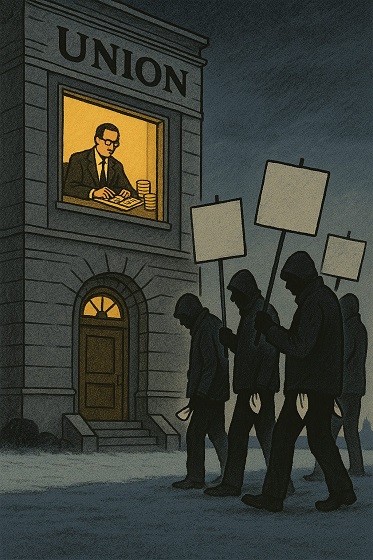
 Marco Navarro-Génie
Marco Navarro-Génie
They Built a Sustaining Rainbow Bureaucracy Instead of a Warchest
Alberta’s teachers walked off the job twice in a few years, which surprised anyone who still believed the old line that teachers avoid confrontation. A strike strips an organization to its essentials. It reveals whether a union carries real strength or only the appearance of it. When the Alberta Teachers’ Association entered a province-wide strike, it took on the posture of a century-old institution, but it drew on reserves of something far younger and far leaner. One question hangs in the air: How did a union that has existed since 1918 arrive at a major labour showdown with so little capacity to sustain its members?
Haultain’s Substack is a reader-supported publication.
To receive new posts and support our work, please consider becoming a free or paid subscriber.
Try it out.
The answer, it turns out, is that the ATA spent a century perfecting the art of growing and protecting itself, but not the teachers who pay for it.
Early unions understood that withdrawing labour meant stepping into a void. Wages vanished at the factory door. Families survived on whatever the union could provide. From small collections grew one of the essential principles of organized labour: A union prepares for conflict by saving in peacetime. It builds the means to protect its members when negotiations break down.
When unions matured, industrial organizations built strike funds large enough to hold firm through prolonged stalemates. These reserves became equalizers. Without them, employers waited for hunger to do the work. With them, a union could bargain in earnest. Strike pay bought time. Time forced movement. Time was power.
Consider what proper unions accomplish. CUPE maintains a national strike fund holding $132.8 million as of 2023. With 650,000 members, that’s about $200 per member in reserve. CUPE pays striking workers $300 per week from day one, rising to $350 after eight weeks. OPSEU maintains a $70 million strike fund, paying $200 per week plus $50 per dependent, increasing to $300 per week at week four.
By contrast, the ATA had $25 million in its Special Emergency Fund when the recent strike began. That money lasted just over two weeks, covering member benefits, not strike pay. For a union with 51,000 members, that’s less than $500 per teacher. After those two weeks, the Association drained its general cash reserves. By the end of the three-week strike, the SEF was depleted. Compare this to CUPE’s $132 million for 650,000 members or OPSEU’s $70 million for 180,000 members, and the ATA’s inadequacy becomes stark.
A century of life gives any organization the chance to build such strength. Over decades it becomes serious. Over a century it becomes formidable. Yet when the association decided to strike on October 6, 2025, it had nothing approaching the reserve needed for a long contest. A union prepared for endurance needs a fund measured in the high tens of millions, not the low twenties. That cushion was missing.
Of course, it was missing. Building a war chest means acknowledging you might actually have to fight a war. Far safer to build a peacetime palace and hope nobody notices when the enemy arrives at the gates.
This weakness grew from the inward turn that overtakes institutions with stable revenue and public status. What begins as a tool for members becomes an organism that primarily protects itself. After the Teaching Profession Act of 1936 entrenched its place in Alberta’s landscape, the ATA expanded like any other public body—without constraint or self-examination. Staff increased. Departments multiplied. New programs became permanent fixtures. Over time, the structure thickened into bureaucracy.
Robert Michels observed more than a century ago that organizations drift toward oligarchy because staff become the custodians of continuity. Members cycle in and out. Staff remain. As this instinct grows, the organization develops a belief that its first duty is to preserve itself. The ATA is no exception. Salaries for staff, internal operations, communication units, legal services, research branches, and advocacy initiatives occupy the foreground of its budget. The association’s annual budget is approximately $50 million, with discretionary programming accounting for less than a quarter. The remainder goes to staff salaries, operations, and fixed expenditures. A strike fund becomes an afterthought. Annual fees for 2025-26 are set at $1,422 per teacher, generating roughly $72 million in yearly revenue. Where did it all go?
The ATA’s books are not open, but there is public evidence of where some spending goes. Much went to campaigns that had precious little to do with wages, benefits, or working conditions. The ATA maintains an elaborate apparatus devoted to social justice advocacy. It supports the Alberta GSA Network, produces extensive resources on sexual and gender minorities, runs a “Walking Together” reconciliation program complete with 25 Indigenous education facilitators, publishes anti-racism materials, maintains Diversity Equity Networks, and employs staff dedicated to promoting SOGI (Sexual Orientation and Gender Identity) inclusion in classrooms. When Premier Danielle Smith announced policies requiring parental notification for name and pronoun changes in schools, the ATA mobilized its complete communications apparatus to oppose the measures, with President Jason Schilling calling them “irresponsible and dangerous” and a “distraction from more important issues.” If that were so, Schilling allowed his organization to be distracted.
I am not passing judgment on whether their causes lack merit or that teachers shouldn’t care about them. That’s their business and their money. But a union exists first and foremost to protect the material interests of its members. When teachers lose a month’s salary because their union spent decades building a rainbow bureaucracy instead of a strike fund, the priorities become clear. The ATA allocated resources to produce toolkits on creating “SOGI-inclusive classrooms” and funded campaigns about transgender policy while its Special Emergency Fund remained woefully inadequate. It hired facilitators to deliver workshops on dismantling anti-Indigenous racism, but couldn’t pay striking teachers a dime. This is ideology dressed up as unionism, performance masquerading as protection.
Haultain’s Substack is a reader-supported publication.
To receive new posts and support our work, please consider becoming a free or paid subscriber.
Try it out.
And here’s the greater irony: when teachers walked the picket lines, union executives kept drawing their salaries. Strike or no strike, the apparatus hummed along. The people running the ATA never missed a paycheque while the members they represent watched their bank accounts drain. In the 2025 strike, teachers lost a month’s salary. In return for this sacrifice, they gained precisely nothing. The settlement forced upon them by the government’s Back to School Act offered no improvement over what was available before they walked out. In fact, 89.5 per cent of teachers had already rejected this very offer on September 29, before the strike even began. In an era of persistent inflation, that lost income hurts. It hurt while union apparatchiks cashed their cheques on schedule.
The pattern of misplaced priorities extends beyond budgeting. When governments announce reforms, the ATA responds with press conferences, research papers, social media campaigns, and policy briefs. These are the tools of a professional bureaucracy, revolutionary in rhetoric, managerial in practice. They convey activity. They project influence. They cost a fortune. The ATA spent approximately $1.2 million on communications advocacy campaigns. Yet none of these tools matter when the government decides to hold firm during wage negotiations. Only endurance matters. Endurance rests on savings. Discipline has been scarce, but glossy newsletters have been plentiful.
The ATA fashions itself as the vanguard of progressive change, draping its pronouncements in the language of social justice and systemic transformation. It speaks like Che Guevara but budgets like a mid-tier insurance company. This is the defanged wolf: all growl, no bite. When push comes to shove, when teachers actually need material support to withstand a strike and make it count, the revolutionary rhetoric evaporates like morning dew. What remains is a comfortable administrative class that has confused advocacy theatre with actual power.
For a union that seeks to control so much of the province’s educational life, the ATA demonstrated a remarkable inability to control its own strike capacity. When the moment arrived to exercise the most fundamental power a union possesses—the withdrawal of labour—it had nothing. This is not the behaviour of a serious labour organization. This is the behaviour of a professional association that occasionally remembers it is supposed to be a union.
The ATA speaks of solidarity and resolve. It encourages teachers to show unity. It frames strikes as moral moments. It talks tough, pushed by its political branch, the NDP. Yet solidarity without resources is fragile. Resolve without savings falters when the bills arrive. A union that accepts going on strike without the means to sustain its membership hands the employer a strategic advantage from the outset. Employers read the same budgets. A union with a thin reserve can shout but cannot stand long, no matter what assurances Nenshi and their political allies make. The employer knows time will do the work. The people insulated from this reality are the NDP MLAs who cheered them on and the union administrators whose paycheques never depend on winning the fight.
It becomes difficult to tell whether the ATA has become an arm of the NDP or whether the NDP serves as the political branch of the ATA. Either way, the relationship has proven costly and fruitless. Opposition leader Naheed Nenshi stood ready with soundbites throughout the strike, encouraging teachers to hold firm while offering nothing of material value. NDP MLAs treated striking teachers and disrupted students as convenient instruments to embarrass the government, cheering on a labour action that could never succeed without the financial backing to sustain it. The enemy of your employer is not necessarily your friend. An independent union would have recognized this and built its strength accordingly, rather than spending resources and political capital on an alliance that delivers applause but not wages.
But it’s a professional association and not a conventional trade union, many will say. Members chose to strike against the leadership’s recommendations. That only seals the argument: It is an admission that the organization has no business going on strike. And if the membership voted for a strike, the leadership should have resigned. No youth leader would ever accept leading Girl Guides into a battlefield against seasoned warriors.
If the NDP functions as the political arm of the ATA, then the union has wasted considerable time and treasure on a supremely ineffective partner. A union serious about protecting its members would invest in strike capacity, not in subsidizing a moribund political movement that cannot deliver victories.
The institutional incentives explain much of this failure. Once an organization builds programs and layers of administration, cutting them becomes painful. Every department has defenders. Every initiative has champions. A strike fund has no constituency except prudence, and prudence has no allies among radicals. Prudence is no match for the seductive appeal of another communications coordinator or tattoo-covered diversity officer. Virtue-signalling solidarity wants no sacrifice. It is easier still when the people making these decisions know they will be paid regardless of whether the teachers they represent can hold out through week three of a strike.
Alberta teachers should demand clarity. They have paid dues for generations. They are told the association exists to protect them. Protection cannot be rhetorical. It must take the form of financial strength when the moment demands it. If the ATA built a bureaucracy instead of a war chest, if it prioritized the comfort of its administrative class over the security of its members, then teachers deserve that truth without varnish. They deserve to know why their union leadership never missed a meal while asking them to tighten their belts for the cause.
The defanged wolf is hurt now. It lashes out with its claws, backing recall campaigns against elected officials and organizing petitions to defund non-ATA school instruction. A Calgary high school teacher and ATA governing council representative wants to end public funding for Alberta’s independent schools, where roughly 2,000 teachers work outside ATA membership, costing the association approximately $2.84 million in foregone dues revenue annually. The petition to defund independent schools masquerades as concern for public education but reeks of institutional self-interest. Those 2,000 teachers represent nearly $3 million in annual dues that never reach ATA coffers. The defunding campaign is not about protecting students. It is about eliminating competition and conscripting teachers into membership. This is the Borg logic of an assimilating monopoly, not solidarity.
Wolves can be declawed, too. A union that cannot win at the bargaining table but insists on fighting everywhere else will find itself further diminished, further isolated, and ultimately less able to serve the teachers who still pay its bills. Vindictiveness is not a substitute for competence, and performative rage cannot replace the strength that comes from prudent preparation.
A century of dues offered the ATA a chance to build real power for its members. That chance slipped away into offices, programs, campaigns, and the salaries of people who never had to worry about surviving a strike because they were never actually on strike. The next century should begin with a different understanding of duty, rooted in prudence rather than performance, in stewardship rather than self-preservation, and in the recognition that a union leadership that doesn’t share the risks of its members has no business sending them into battle.
A defanged wolf can howl all it wants. Until it grows its teeth back, no one needs to take it seriously.
To receive new posts and support our work, please consider becoming a free or paid subscriber.
Try it out.
Alberta
Federal budget: It’s not easy being green
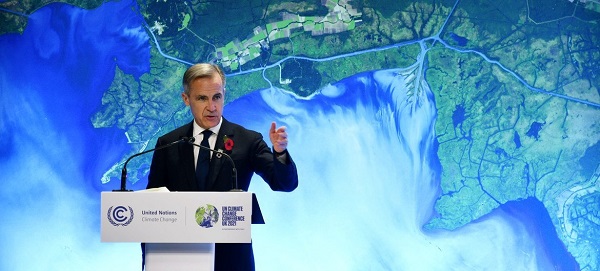
From Resource Works
Canada’s climate rethink signals shift from green idealism to pragmatic prosperity.
Bill Gates raised some eyebrows last week – and probably the blood pressure of climate activists – when he published a memo calling for a “strategic pivot” on climate change.
In his memo, the Microsoft founder, whose philanthropy and impact investments have focused heavily on fighting climate change, argues that, while global warming is still a long-term threat to humanity, it’s not the only one.
There are other, more urgent challenges, like poverty and disease, that also need attention, he argues, and that the solution to climate change is technology and innovation, not unaffordable and unachievable near-term net zero policies.
“Unfortunately, the doomsday outlook is causing much of the climate community to focus too much on near-term emissions goals, and it’s diverting resources from the most effective things we should be doing to improve life in a warming world,” he writes.
Gates’ memo is timely, given that world leaders are currently gathered in Brazil for the COP30 climate summit. Canada may not be the only country reconsidering things like energy policy and near-term net zero targets, if only because they are unrealistic and unaffordable.
It could give some cover for Canadian COP30 delegates, who will be at Brazil summit at a time when Prime Minister Mark Carney is renegotiating his predecessor’s platinum climate action plan for a silver one – a plan that contains fewer carbon taxes and more fossil fuels.
It is telling that Carney is not at COP30 this week, but rather holding a summit with Alberta Premier Danielle Smith.
The federal budget handed down last week contains kernels of the Carney government’s new Climate Competitiveness Strategy. It places greater emphasis on industrial strategy, investment, energy and resource development, including critical minerals mining and LNG.
Despite his Davos credentials, Carney is clearly alive to the fact it’s a different ballgame now. Canada cannot afford a hyper-focus on net zero and the green economy. It’s going to need some high octane fuel – oil, natural gas and mining – to prime Canada’s stuttering economic engine.
The prosperity promised from the green economy has not quite lived up to its billing, as a recent Fraser Institute study reveals.
Spending and tax incentives totaling $150 billion over a decade by Ottawa, B.C, Ontario, Alberta and Quebec created a meagre 68,000 jobs, the report found.
“It’s simply not big enough to make a huge difference to the overall performance of the economy,” said Jock Finlayson, chief economist for the Independent Contractors and Business Association and co-author of the report.
“If they want to turn around what I would describe as a moribund Canadian economy…they’re not going to be successful if they focus on these clean, green industries because they’re just not big enough.”
There are tentative moves in the federal budget and Climate Competitiveness Strategy to recalibrate Canada’s climate action policies, though the strategy is still very much in draft form.
Carney’s budget acknowledges that the world has changed, thanks to deglobalization and trade strife with the U.S.
“Industrial policy, once seen as secondary to market forces, is returning to the forefront,” the budget states.
Last week’s budget signals a shift from regulations towards more investment-based measures.
These measures aim to “catalyse” $500 billion in investment over five years through “strengthened industrial carbon pricing, a streamlined regulatory environment and aggressive tax incentives.”
There is, as-yet, no commitment to improve the investment landscape for Alberta’s oil industry with the three reforms that Alberta has called for: scrapping Bill C-69, a looming oil and gas emissions cap and a West Coast oil tanker moratorium, which is needed if Alberta is to get a new oil pipeline to the West Coast.
“I do think, if the Carney government is serious about Canada’s role, potentially, as an global energy superpower, and trying to increase our exports of all types of energy to offshore markets, they’re going to have to revisit those three policy files,” Finlayson said.
Heather Exner-Pirot, director of energy, natural resources and environment at the Macdonald-Laurier Institute, said she thinks the emissions cap at least will be scrapped.
“The markets don’t lie,” she said, pointing to a post-budget boost to major Canadian energy stocks. “The energy index got a boost. The markets liked it. I don’t think the markets think there is going to be an emissions cap.”
Some key measures in the budget for unlocking investments in energy, mining and decarbonization include:
- incentives to leverage $1 trillion in investment over the next five years in nuclear and wind power, energy storage and grid infrastructure;
- an expansion of critical minerals eligible for a 30% clean technology manufacturing investment tax credit;
- $2 billion over five years to accelerate critical mineral production;
- tax credits for turquoise hydrogen (i.e. hydrogen made from natural gas through methane pyrolysis); and
- an extension of an investment tax credit for carbon capture utilization and storage through to 2035.
As for carbon taxes, the budget promises “strengthened industrial carbon pricing.”
This might suggest the government’s plan is to simply simply shift the burden for carbon pricing from the consumer entirely onto industry. If that’s the case, it could put Canadian resource industries at a disadvantage.
“How do we keep pushing up the carbon price — which means the price of energy — for these industries at a time when the United States has no carbon pricing at all?” Finlayson wonders.
Overall, Carney does seem to be moving in the right direction in terms of realigning Canada’s energy and climate policies.
“I think this version of a Liberal government is going to be more focused on investment and competitiveness and less focused around the virtue-signaling on climate change, even though Carney personally has a reputation as somebody who cares a lot about climate change,” Finlayson said.
“It’s an awkward dance for them. I think they are trying to set out a different direction relative to the Trudeau years, but they’re still trying to hold on to the Trudeau climate narrative.”
Pictured is Mark Carney at COP26 as UN Special Envoy on Climate Action and Finance. He is not at COP30 this week. UNRIC/Miranda Alexander-Webber
Resource Works News
-
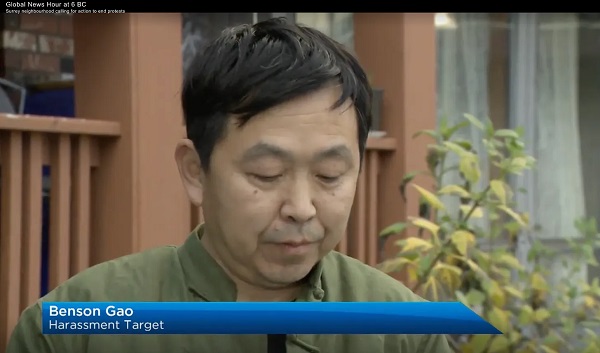
 espionage2 days ago
espionage2 days agoChinese-Owned Trailer Park Beside U.S. Stealth Bomber Base Linked to Alleged Vancouver Repression Case
-

 Daily Caller2 days ago
Daily Caller2 days agoLaura Ingraham Presses Trump On Allowing Flood Of Chinese Students Into US
-
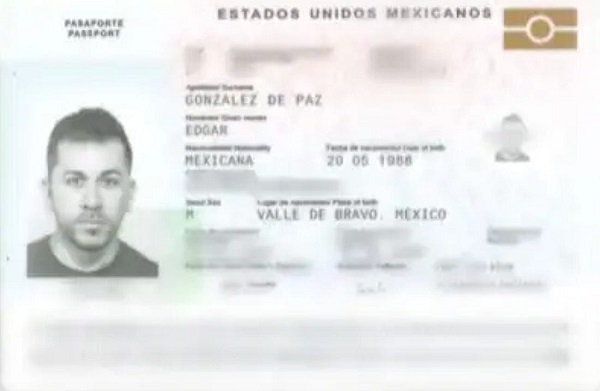
 Crime19 hours ago
Crime19 hours agoCBSA Bust Uncovers Mexican Cartel Network in Montreal High-Rise, Moving Hundreds Across Canada-U.S. Border
-

 Environment20 hours ago
Environment20 hours agoThe Myths We’re Told About Climate Change | Michael Shellenberger
-
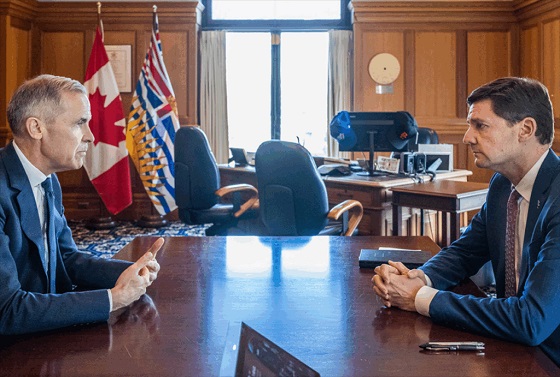
 Energy1 day ago
Energy1 day agoIt should not take a crisis for Canada to develop the resources that make people and communities thrive.
-
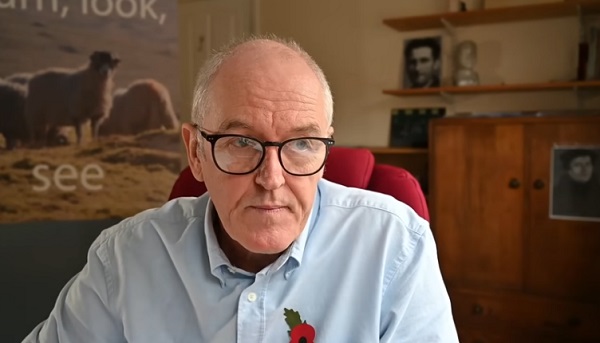
 Dr John Campbell1 day ago
Dr John Campbell1 day agoCures for Cancer? A new study shows incredible results from cheap generic drug Fenbendazole
-

 Alberta2 days ago
Alberta2 days agoFederal budget: It’s not easy being green
-

 Business2 days ago
Business2 days agoWill Paramount turn the tide of legacy media and entertainment?









